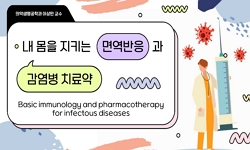Objective: Serious bacterial infection (SBI) is a common disease among infants, and it is associated with high morbidity and mortality. Making the diagnosis of SBI is challenging and measurement of various biomarkers is useful. This study examined the...
http://chineseinput.net/에서 pinyin(병음)방식으로 중국어를 변환할 수 있습니다.
변환된 중국어를 복사하여 사용하시면 됩니다.
- 中文 을 입력하시려면 zhongwen을 입력하시고 space를누르시면됩니다.
- 北京 을 입력하시려면 beijing을 입력하시고 space를 누르시면 됩니다.

어린 영아의 중증 세균성 감염 진단에 젖산 측정의 효용성 = Utility of lactate measurement in the diagnosis of serious bacterial infection in young infants
한글로보기https://www.riss.kr/link?id=A106594194
- 저자
- 발행기관
- 학술지명
- 권호사항
-
발행연도
2020
-
작성언어
Korean
- 주제어
-
등재정보
KCI등재
-
자료형태
학술저널
- 발행기관 URL
-
수록면
105-110(6쪽)
-
KCI 피인용횟수
0
- 제공처
- 소장기관
-
0
상세조회 -
0
다운로드
부가정보
다국어 초록 (Multilingual Abstract)
Objective: Serious bacterial infection (SBI) is a common disease among infants, and it is associated with high morbidity and mortality. Making the diagnosis of SBI is challenging and measurement of various biomarkers is useful. This study examined the utility of lactate at an emergency department for diagnosing SBI patients.
Methods: This was a retrospective, observational study of febrile infants less than 90 days old presenting to the emergency department of a tertiary hospital between September 2014 and August 2017. The demographic and laboratory data was collected through a chart review.
Results: Laboratory tests such as the white blood cell count, C-reactive protein (CRP), procalcitonin, and lactate showed significant differences on the Student-T test and the Mann Whitney-U test. Multivariabe logistic regression test was done using the variables with significant differences. CRP (P=0.037; odds ratio, 1.01), procalcitonin (P=0.011; odds ratio, 1.02) and lactate (P=0.001; odds ratio, 2.38) shows significant correlation.
Conclusion: For febrile infants at the emergency department, the measurement of lactate is expected to be a useful tool to diagnose serious bacterial infection.
참고문헌 (Reference)
1 Schelonka RL, "Volume of blood required to detect common neonatal pathogens" 129 : 275-278, 1996
2 Michael Meisner, "Update on Procalcitonin Measurements" 대한진단검사의학회 34 (34): 263-273, 2014
3 Stoll BJ, "To tap or not to tap : high likelihood of meningitis without sepsis among very low birth weight infants" 113 : 1181-1186, 2004
4 Scott HF, "The utility of early lactate testing in undifferentiated pediatric systemic inflammatory response syndrome" 19 : 1276-1280, 2012
5 Kawamura M, "The usefulness of serial C-reactive protein measurement in managing neonatal infection" 84 : 10-13, 1995
6 Manroe BL, "The neonatal blood count in health and disease. I. Reference values for neutrophilic cells" 95 : 89-98, 1979
7 Pourcyrous M, "Significance of serial C-reactive protein responses in neonatal infection and other disorders" 92 : 431-435, 1993
8 Jeng JC, "Serum lactate, not base deficit, rapidly predicts survival after major burns" 28 : 161-166, 2002
9 Tuten A, "Serum lactate levels and perfusion index: are these prognostic factors on mortality and morbidity in very low-birth weight infants?" 30 : 1092-1095, 2017
10 Ashkenazi-Hoffnung L, "Serious bacterial infections in hospitalized febrile infants aged 90days or younger : the traditional combination of ampicillin and gentamicin is still appropriate" 43 : 489-494, 2011
1 Schelonka RL, "Volume of blood required to detect common neonatal pathogens" 129 : 275-278, 1996
2 Michael Meisner, "Update on Procalcitonin Measurements" 대한진단검사의학회 34 (34): 263-273, 2014
3 Stoll BJ, "To tap or not to tap : high likelihood of meningitis without sepsis among very low birth weight infants" 113 : 1181-1186, 2004
4 Scott HF, "The utility of early lactate testing in undifferentiated pediatric systemic inflammatory response syndrome" 19 : 1276-1280, 2012
5 Kawamura M, "The usefulness of serial C-reactive protein measurement in managing neonatal infection" 84 : 10-13, 1995
6 Manroe BL, "The neonatal blood count in health and disease. I. Reference values for neutrophilic cells" 95 : 89-98, 1979
7 Pourcyrous M, "Significance of serial C-reactive protein responses in neonatal infection and other disorders" 92 : 431-435, 1993
8 Jeng JC, "Serum lactate, not base deficit, rapidly predicts survival after major burns" 28 : 161-166, 2002
9 Tuten A, "Serum lactate levels and perfusion index: are these prognostic factors on mortality and morbidity in very low-birth weight infants?" 30 : 1092-1095, 2017
10 Ashkenazi-Hoffnung L, "Serious bacterial infections in hospitalized febrile infants aged 90days or younger : the traditional combination of ampicillin and gentamicin is still appropriate" 43 : 489-494, 2011
11 Chan GJ, "Risk of early-onset neonatal infection with maternal infection or colonization : a global systematic review and meta-analysis" 10 : e1001502-, 2013
12 Chiesa C, "Reliability of procalcitonin concentrations for the diagnosis of sepsis in critically ill neonates" 26 : 664-672, 1998
13 Jia Y, "Relationship between blood lactic acid, blood procalcitonin, C-reactive protein and neonatal sepsis and corresponding prognostic significance in sick children" 14 : 2189-2193, 2017
14 Chauhan N, "Potential biomarkers for effective screening of neonatal sepsis infections : an overview" 107 : 234-242, 2017
15 Huppler AR, "Performance of lowrisk criteria in the evaluation of young infants with fever : review of the literature" 125 : 228-233, 2010
16 Baskin MN, "Outpatient treatment of febrile infants 28 to 89 days of age with intramuscular administration of ceftriaxone" 120 : 22-27, 1992
17 Baker MD, "Outpatient management without antibiotics of fever in selected infants" 329 : 1437-1441, 1993
18 Shah BA, "Neonatal sepsis : an old problem with new insights" 5 : 170-178, 2014
19 Shane AL, "Neonatal sepsis" 390 : 1770-1780, 2017
20 Pammi M, "Molecular assays in the diagnosis of neonatal sepsis : a systematic review and meta-analysis" 128 : e973-e985, 2011
21 Faron ML, "Matrix-assisted laser desorption ionization-time of flight mass spectrometry for use with positive blood cultures : methodology, performance, and optimization" 55 : 3328-3338, 2017
22 Lee SW, "Lactic acidosis not hyperlactatemia as a predictor of in hospital mortality in septic emergency patients" 25 : 659-665, 2008
23 Kraut JA, "Lactic acidosis : current treatments and future directions" 68 : 473-482, 2016
24 van Hall G, "Lactate kinetics in human tissues at rest and during exercise" 199 : 499-508, 2010
25 Abramson D, "Lactate clearance and survival following injury" 35 : 584-588, 1993
26 Lawton L, "Is lactate an effective clinical marker of outcome for children with major trauma? : A literature review" 28 : 39-45, 2016
27 Saugel B, "Hemodynamic management of septic shock: is it time for “individualized goal-directed hemodynamic therapy” and for specifically targeting the microcirculation?" 43 : 522-529, 2015
28 Barth E, "Glucose metabo-lism and catecholamines" 35 (35): S508-S518, 2007
29 Jaskiewicz JA, "Febrile infants at low risk for serious bacterial infection: an appraisal of the Rochester criteria and implications for management. Febrile Infant Collaborative Study Group" 94 : 390-396, 1994
30 Christensen RD, "Fatal early onset group B streptococcal sepsis with normal leukocyte counts" 4 : 242-245, 1985
31 Broder G, "Excess lactate : an index of reversibility of shock in human patients" 143 : 1457-1459, 1964
32 Salimnia H, "Evaluation of the FilmArray blood culture identification panel : results of a multicenter controlled trial" 54 : 687-698, 2016
33 Arora HS, "Enhanced identification of group B Streptococcus and Escherichia coli in young infants with meningitis using the biofire filmarray meningitis/encephalitis panel" 36 : 685-687, 2017
34 Donnino MW, "Effective lactate clearance is associated with improved outcome in postcardiac arrest patients" 75 : 229-234, 2007
35 Simonsen KA, "Early-onset neonatal sepsis" 27 : 21-47, 2014
36 Hu L, "Diagnostic Value of PCT and CRP for detecting serious bacterial infections in patients with fever of unknown origin : a systematic review and meta-analysis" 25 : e61-9, 2017
37 Chiesa C, "Diagnosis of neonatal sepsis : a clinical and laboratory challenge" 50 : 279-287, 2004
38 Consoli A, "Contribution of liver and skeletal muscle to alanine and lactate metabolism in humans" 259 : E677-E684, 1990
39 Young B, "C-reactive protein : a critical review" 23 : 118-124, 1991
40 Tang BM, "Accuracy of procalcitonin for sepsis diagnosis in critically ill patients : systematic review and meta-analysis" 7 : 210-217, 2007
동일학술지(권/호) 다른 논문
-
근위축측삭경화증 환자의 심폐소생술 시 적절한 흉부압박 깊이 연구: 후향적 연구
- 대한응급의학회
- 권대영
- 2020
- KCI등재
-
황화수소에 집단 노출되어 치료한 환자들에 대한 임상 보고와 문헌 고찰
- 대한응급의학회
- 김민수
- 2020
- KCI등재
-
응급실을 방문하는 성인 환자에서 예후 평가를 위한 조기경고점수의 비교
- 대한응급의학회
- 이형후
- 2020
- KCI등재
-
Performance of four different tools for predicting mortality in elderly patients with severe trauma
- 대한응급의학회
- 이지호
- 2020
- KCI등재
분석정보
인용정보 인용지수 설명보기
학술지 이력
| 연월일 | 이력구분 | 이력상세 | 등재구분 |
|---|---|---|---|
| 2027 | 평가예정 | 재인증평가 신청대상 (재인증) | |
| 2021-01-01 | 평가 | 등재학술지 유지 (재인증) |  |
| 2020-05-08 | 학회명변경 | 영문명 : The Korean Society Of Emergency Medicine -> The Korean Society of Emergency Medicine |  |
| 2018-01-01 | 평가 | 등재학술지 유지 (등재유지) |  |
| 2015-01-01 | 평가 | 등재학술지 유지 (등재유지) |  |
| 2011-01-01 | 평가 | 등재학술지 유지 (등재유지) |  |
| 2009-01-01 | 평가 | 등재학술지 유지 (등재유지) |  |
| 2006-01-01 | 평가 | 등재학술지 선정 (등재후보2차) |  |
| 2005-01-01 | 평가 | 등재후보 1차 PASS (등재후보1차) |  |
| 2003-01-01 | 평가 | 등재후보학술지 선정 (신규평가) |  |
학술지 인용정보
| 기준연도 | WOS-KCI 통합IF(2년) | KCIF(2년) | KCIF(3년) |
|---|---|---|---|
| 2016 | 0.23 | 0.23 | 0.22 |
| KCIF(4년) | KCIF(5년) | 중심성지수(3년) | 즉시성지수 |
| 0.22 | 0.22 | 0.339 | 0.06 |





 KCI
KCI







